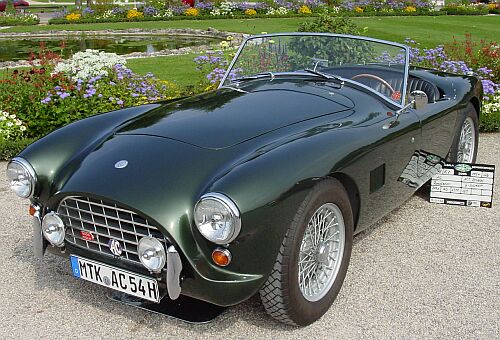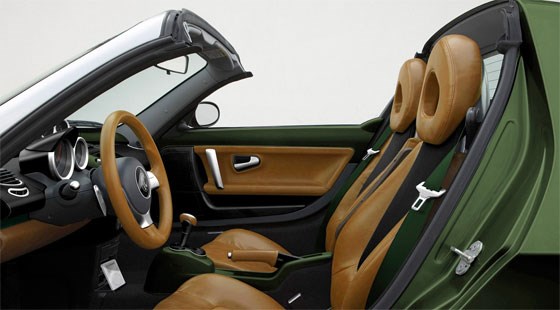 |  |
| Manufacturer | AC Cars |
|---|---|
| Production | 1951–1962 |
| Class | Roadster |
| Body Style | 2-door Roadster |
| Engine(s) | 2.0 L I6/2.6 L |
| Transmission(s) | 4-speed Manual(With overdrive available) |
| Wheelbase | 90 in (2286 mm) |
| Length | 152 in (3861 mm) |
| Width | 59.5 in (1511 mm) |
| Height | 49 in (1245 mm) |
| Curb weight | 1920 lb (871 kg) |
| Related | AC Cobra |
AC came back to the market after the Second World War with the staid Two-litre range of cars in 1947, but it was with the Ace sports car of 1953 that the company really made its reputation in the post war years. Casting around for a replacement for the ageing Two litre, AC took up a design by John Tojeiro[1] that used a light ladder type tubular frame, all independent transverse leaf spring suspension, and an open two seater alloy body that was made using English wheeling machines, possibly inspired by the Ferrari Barchetta of the day.
Early cars used AC's elderly two litre, overhead cam, 100 bhp (70 kW), straight six engine (first seen soon after the end of the First World War) which gave a top speed of 102 mph (164 km/h) and 0-60 mph (96 km/h) in 13 seconds. It was hardly a sporting engine, however, and it was felt that something more modern and powerful was required to put the modern chassis to good use. Thus, from 1956, there was the option of Bristol Car's superb two litre 120 bhp (89 kW) straight six engine with 3 downdraught carburettors and slick four speed gearbox. Top speed leapt to 116 mph (186 km/h) with 0-60 (96 km/h) in the nine second bracket, and response was much sweeter and modern. This was replaced in 1962 with the 2.6 liter Ken Rudd 'Ruddspeed' engine, adapted from that used in the Ford Zephyr. It used 3 Weber or SU carburettors and either a 'Mays' or iron cast head. This set up boosted the car's performance further, but it was not long before Carroll Shelby pulled AC's attention to the Cobra, so only about 40 were ever made.
In the final years of productions some Ace models were fitted with the MKII Ford Zephyr 2.6 litre straight-6 engine. These Ford engined models had a smaller grille which was carried over to the Cobra.
The British Motor magazine tested an AC engined Ace in 1954 recording a top speed of 103 mph (166 km/h) and acceleration from 0-60 mph (97 km/h) in 11.4 seconds and a fuel consumption of 25.2 miles per imperial gallon (11.2 L/100 km; 21.0 mpg-US). The test car cost £1439 including taxes.
The car raced at Le Mans in 1957 and 1958. Few cars with this provenance have survived and are extremely valuable. They can range from $100,000 or more for an unrestored car, even one in pieces, to in excess of $400,000 for a restored AC Ace.







